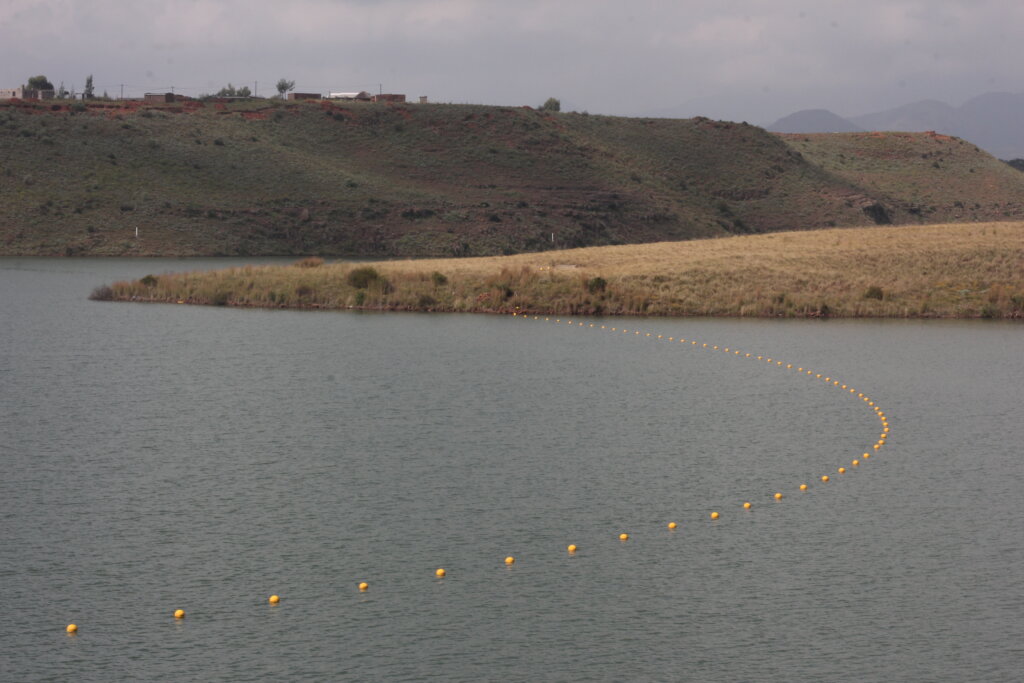Le changement climatique exerce une pression croissante sur les ressources naturelles, menaçant l'humanité et la nature. Risques liés à l'eau are an example of this: in many parts of the world, scarce and continuously declining availabilities of water cause major concerns such as drought, while in other places, too much water causes great disturbance in the form of floods. Overall, climate change is expected to decrease water supply, alter the timing of water availability, and increase the severity of both droughts and floods, hitting already vulnerable communities the hardest. These threats to the environment and local populations require ambitious measures in response – and preparation.
La disponibilité des données sur les ressources hydriques mondiales a un rôle à jouer dans la gestion de ces défis. C'est pourquoi, avec Google.org de financement, Deltares, le Institut des ressources mondiales (WRI) et le Fonds mondial pour la nature (WWF) ont uni leurs forces pour développer la Observatoire mondial de l'eau. This platform provides free, globally accessible, near-real-time information on water availability in over 70,000 global reservoirs and major river systems, derived using satellite data, machine learning, and cloud computing. While there is often a focus on the correlation between drought and precipitation in anticipatory action research and operations, the relevance of information on available water storage can be overlooked. The Global Water Watch could change this, by providing easy-to-access information on water storage globally which allows for predictions of drought occurring, and appropriate anticipatory measures, ahead of time. In the tool’s ongoing development, thanks to funding from the Agence spatiale européenne (ESA), Deltares et 510, l'initiative de la Croix-Rouge néerlandaise en matière de données et de technologies numériques, collaborent afin d'apporter de nouvelles améliorations en mettant en œuvre la surveillance du stockage de l'eau et en étudiant l'utilité de ces informations à des fins humanitaires.

“Global Water Watch may provide essential information in areas that strongly rely on surface water resources for, for example, food production or drinking water supply. If drought occurs in a remote area, Global Water Watch should be able to detect this at an early stage, provide key insights into the amount of available water, and potentially inform stakeholders such as the Red Cross.” – Hessel Winsemius, hydrologue en chef chez Deltares
Cet outil devrait faciliter la réponse aux événements météorologiques extrêmes, la gestion des risques liés au climat et l'amélioration de la résilience des sociétés face au climat. C'est là que le projet 510 entre en jeu : en étroite collaboration avec les concepteurs de l'Observatoire mondial de l'eau, nous avons engagé un dialogue avec plusieurs sociétés nationales de la Croix-Rouge et du Croissant-Rouge actives dans le domaine de l'action anticipative et de la gestion de l'eau, afin de comprendre leurs besoins et de veiller à ce que l'outil final y réponde. En intégrant ces informations, l'Observatoire mondial de l'eau a le potentiel de devenir un précurseur parmi les outils utilisés par les professionnels de l'action anticipative dans le secteur humanitaire pour prévoir la sécheresse et protéger en conséquence les vies et les moyens de subsistance des populations touchées.
Prévoir et réduire l'impact de la sécheresse au Lesotho
L'un de ces dialogues a été entrepris en Lesotho, where inconsistent rainfall, a hot, dry climate and intense drought are making the country’s population increasingly vulnerable. A shortage of permanent surface water over large parts of the country has turned water into a scarce resource, exposing local communities to food insecurity due to crop failure and unproductive rangelands. The Lesotho Red Cross Society is closely involved in water management to mitigate such risks and protect people from their impact. To test the usefulness of the Global Water Watch for these purposes, a delegation from the 510 team undertook a visit to Lesotho in March 2023. Discussions with the National Society and other stakeholders such as the Lesotho Ministry of Water contributed to a better understanding of current tools used to inform decision-making in this context, allowing for conclusions on where the Global Water Watch could fit in. This visit inspired ongoing conversations on global and local levels about how water storage data can inform anticipatory action. Guided by these conversations, the tool has undergone further technical improvements.

“This initiative has been an eye opener to the National Society and the government partners overall. Global Water Watch provides useful information that can support programming with the aim of helping the most vulnerable.” – Sebongile Hlubi, coordinateur de l'action anticipée et de la préparation à la Croix-Rouge du Lesotho
What’s next?
Bien qu'il soit déjà avancé et prêt à être utilisé dans de multiples contextes, le développement de l'Observatoire mondial de l'eau est en constante évolution. La plateforme sera encore élargie dans un avenir proche. Les principaux développements prévus dans les années à venir sont l'amélioration de la précision et des informations sur l'incertitude pour les réservoirs surveillés existants, la possibilité pour les utilisateurs d'ajouter ou de suggérer la surveillance de nouvelles masses d'eau, et la prévision de la disponibilité de l'eau dans les mois à venir.
Nous voulons vous entendre !
Vous souhaitez en savoir plus sur ce projet ? N'hésitez pas à contacter
Coordinateur technique de projet, Surface-2-Storage : Daniele Castellana dcastellana@redcross.nl
Conseiller, Action anticipée : Marc van den Homberg mvandenhomberg@redcross.nl